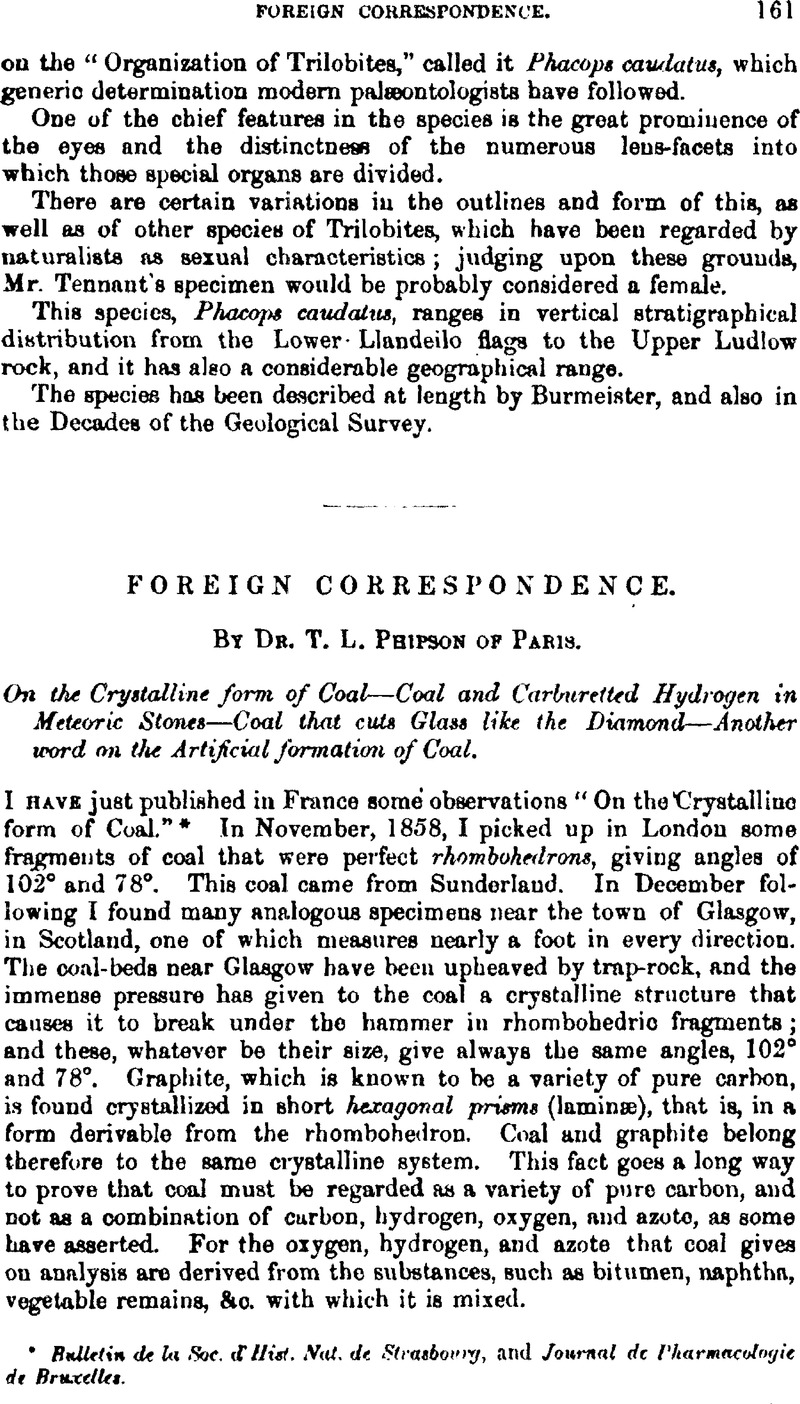No CrossRef data available.
Article contents
Abstract

- Type
- Other
- Information
- Copyright
- Copyright © Cambridge University Press 1859
References
page 161 note * Bulletin de la Soc. d'Hist. Nat. de Strasboury, and Journal de Pharmacologie de Bruxelles.
page 163 note * The absorption of carbon by, or the crystallization of the volatilized carbon upon, other substances is prettily displayed in the case of straw, matting, or other foreign substances lying on the surface of the materials in the coke- and cinder-ovens. These become impregnated and coated with metallic-like films and masses of crystals; which action of deposit appears to take place after the doors of the furnace are closed, when there is no escape for the carbon volatilized by the heated mass beneath.—Ed. Geol.
page 163 note † At this rate quartz, flint, ruby, &c. should possess the hardness of the diamond.—T. L. P.
page 163 note ‡ I have been told by the men employed in the South Eastern Railway Company's coke–ovens at Folkestone that the extreme points of the coke-lumps, which are there made for the locomotives on that line, will cut glass like the diamond. I have not, however, verified the statement by actual expenment.—Ed. Geol.




